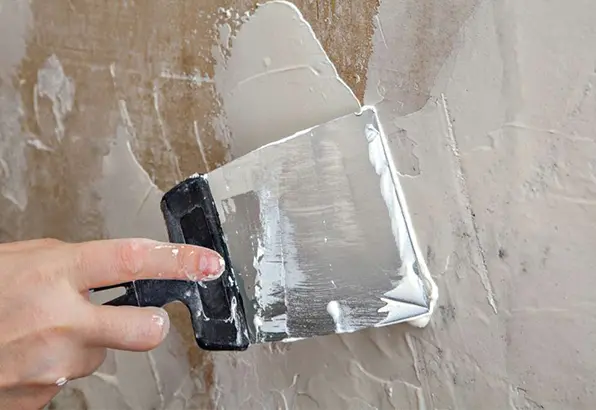In wallpaper production,celluloseEspecially natural cellulose such as wood pulp and cotton pulp, as well as cellulose derivatives such as methyl cellulose MC and hydroxypropyl methyl cellulose HPMC, are core raw materials or functional additives. Their effects run through multiple stages of wallpaper substrate forming, coating processing, and performance optimization, improving the mechanical properties, environmental friendliness, workability, and user experience of wallpaper. The specific functions and improvement characteristics are as follows:
1、 As the core material of the substrate: determining the basic performance of wallpaper
The substrate of wallpaper (such as pure paper wallpaper and non-woven wallpaper base fabric) is often mainly composed of natural cellulose (such as wood pulp, bamboo pulp, cotton fibers, etc.), which serves to construct the "skeleton" of wallpaper and directly affects the physical properties of the substrate:
Enhance the mechanical strength of the substrate
Cellulose molecular chains are connected by hydrogen bonds to form a stable fiber network, providing wallpaper substrates with sufficient tensile and tear strength, avoiding damage during construction due to stretching or folding, or cracking during use due to collision or friction.
For example, the higher the content of wood pulp cellulose in pure paper wallpaper, the tougher the paper and the less likely it is to become "brittle" (especially in dry environments).
Endow the substrate with good breathability
There are numerous tiny pores between natural cellulose fibers, forming breathable channels that give wallpaper substrates breathability. This feature can prevent the accumulation of water vapor inside the wall (such as when the wall is damp), reduce the risk of wallpaper mold and warping due to "stuffiness", especially suitable for humid areas in the south or spaces with high humidity such as bathrooms and kitchens.
Enhance the environmental friendliness and degradability of the substrate
naturalcelluloseDerived from plants (wood, cotton, etc.), compared to synthetic substrates such as PVC, it has no formaldehyde, no odor, and can naturally degrade after disposal, meeting the market demand for environmentally friendly wallpaper (such as pure paper wallpaper commonly used in children's rooms and bedrooms, one of the core selling points is "natural cellulose substrate, safe and non-toxic").
2、 As a coating/adhesive additive: optimizing surface properties and workability
Cellulose derivatives (such as methyl cellulose, hydroxypropyl cellulose) are often used as thickeners, adhesives, or stabilizers in wallpaper coatings (such as printing layers, wear-resistant layers) or backing layers to improve the following characteristics:
Improve the uniformity and adhesion of the coating
Cellulose derivatives can thicken the coating slurry, adjust the viscosity of the slurry, and avoid "sagging" (pattern blurring caused by thin coating) or "exposure" (uneven distribution caused by thick coating) during printing or coating.
The hydroxyl groups in its molecular chain can form hydrogen bonds with the substrate fibers, pigments (such as titanium dioxide) or resins in the coating, enhancing the adhesion between the coating and the substrate, and preventing the coating from falling off or fading during use (such as retro style wallpaper, the printing layer needs to be kept clear for a long time, and cellulose additives are key).
Improve the stickiness and construction convenience of the adhesive backing
Adding cellulose ether to wallpaper backing adhesive (especially pre coated wallpaper) can adjust the initial viscosity and water retention of the adhesive layer:
Moderate initial adhesion: Avoid the wallpaper sticking to the wall too quickly during construction, which may cause difficulty in positioning, while ensuring that it is not easy to slip off after fitting.
Good water retention: Extend the drying time of the adhesive layer, allowing construction personnel time to adjust the wallpaper alignment and splicing (such as the large-scale laying of seamless wallpaper, the adhesive layer needs to dry slowly to ensure overall flatness).
Enhance the water resistance and stain resistance of the coating
Partial modificationcellulose(such as hydrophobic modified hydroxypropyl methyl cellulose) can enhance the water resistance of the coating, making the wallpaper surface less prone to softening and wrinkling due to moisture (such as splashing water, steam), especially suitable for wallpaper in bathroom, kitchen and other scenes (requiring the use of other waterproof additives, with cellulose serving as an auxiliary).
The membrane structure formed by cellulose can reduce the penetration of stains (such as fingerprints and soup), enhance the stain resistance of wallpaper, and facilitate daily cleaning (such as not easily damaged when wiping with a damp cloth).
3、 Improving the user experience of wallpaper: adapting to different scene requirements
Enhance flexibility and flexural resistance
The flexibility of cellulose molecular chains makes wallpaper less prone to breakage during rolling and transportation. During construction, it can be bent and fitted according to the curvature of the wall (such as corners and columns), reducing creases or cracks (such as European style wallpaper, which often needs to be fitted to complex shaped walls, and the addition of cellulose can enhance its "plasticity").
Adjust glossiness and texture
Natural cellulose substrates (such as cotton pulp paper) have a delicate surface and can give wallpaper a matte or natural luster, avoiding the "plastic feel" of PVC wallpaper. They are suitable for creating a warm and natural indoor atmosphere (such as wood pulp cellulose substrates commonly used in Japanese and Nordic style wallpapers, emphasizing soft texture).
Enhance flame retardancy (auxiliary effect)
Natural cellulose itself is a combustible material, but by compounding with flame retardants such as phosphorus and nitrogen, cellulose molecular chains can adsorb flame retardants and form a protective layer, delaying the combustion rate and improving the flame retardant level of wallpaper (especially in public space wallpaper, which must meet fire safety regulations).
summary
Cellulose is a multifunctional core material in wallpaper production. When used as a substrate, it determines the environmental friendliness, breathability, and basic strength of wallpaper; When used as an additive, optimize coating uniformity, construction viscosity, and water resistance; By improving flexibility, stain resistance, and adaptability, wallpaper can be adapted to different scenarios (such as the environmental needs of bedrooms, the moisture resistance needs of bathrooms, and the tear resistance needs of children's rooms). Compared to synthetic polymer materials, the addition of cellulose can also reduce the "chemical feel" of wallpaper, which is more in line with modern home decor's pursuit of "nature and health".


TEL:+86 (0311) 8444 9786
Email:sales@double-bulls.com
Email:Export@double-bulls.com
Address:No.9 Weisi Road, Jinzhou City Eco-nomic Development Zone, Shijiazhuang City, Hebei Province.

Website

Brochure

Video